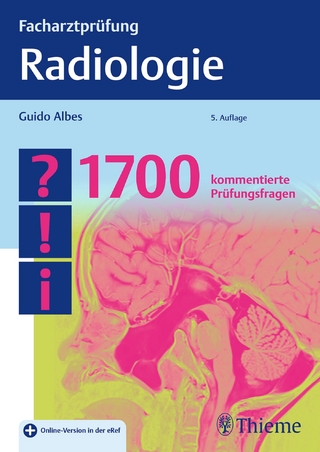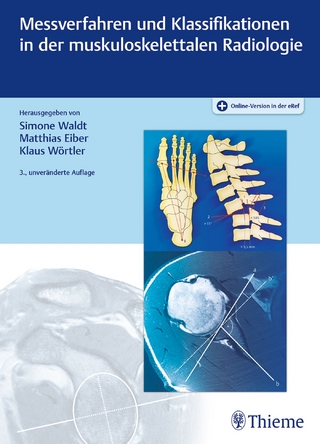
Radiology of the Small Bowel
Kluwer Academic Publishers (Verlag)
978-90-247-2460-4 (ISBN)
- Titel ist leider vergriffen;
keine Neuauflage - Artikel merken
The infusion method has added a new dimension to the usual radiological examination of the small intestine. This method is also especially suited for the comparative evaluation of motility, and the study of disturbed motility. Throughout the course of the examination, the technique can be adapted to special situations at any given moment and can be modified to produce precise diagnostic roentgenograms and diagnosis.
1. Introduction.- 2. Anatomy.- 1. Normal mucosa in the small intestine.- 2. Normal position of the intestine.- 3. Normal impressions on the intestine.- 4. Filling defects between the intestinal loops.- 3. Physiology.- 1. Innervation and motility.- 2. Gastric emptying and transit time.- 4. The Contrast Medium.- 1. General considerations.- 2. Sedimentation of the contrast medium.- 3. Flocculation of the contrast fluid.- 4. Segmentation of the contrast column.- 5. Additives to the contrast medium for the purpose of improving stability and adhesion.- 6. Relationship between viscosity, particle size, and adhesion of the barium suspension.- 7. Specific gravity of the contrast fluid.- 8. Contrast media other than barium sulfate.- 5. Methods of Examination.- 1. 'Physiological' examination of the small intestine.- 2. Single administration of the contrast medium.- 3. Fractional administration of the contrast medium.- 4. Administration of cold fluids with the contrast medium.- 5. Administration of the contrast medium through a tube directly into the small intestine (enteroclysis).- 6. Retrograde administration of the contrast fluid.- 7. Combined methods of examination.- 8. Use of drugs to accelerate transit.- 6. General Considerations.- 7. The Enteral Contrast Infusion.- 1. Preparation of patients.- 2. Duodenal intubation.- 3. Partial gastrectomy.- 4. Special types of tubes.- 5. Administration of contrast fluid.- 6. Administration of water after the barium suspension.- 7. Administration of air after contrast fluid.- 8. Compression technique.- 8. Basic Signs of Abnormality.- 1. Changes in the mucosal patterns.- 2. Lymph follicles - nodules - polyps.- 3. Foreign bodies and filling defects in the contrast fluid.- 4. Ulcerations.- 5. Deformation of the intestine.- 6. Dilution of the contrast fluid - haziness - mucus secretion.- 7. Disintegration and misleading patterns.- 8. Malabsorption.- 9. Motility 180 Bibliography: chapters 1-8.- 9. Inflammation and Inflammatory-Like Diseases.- 1. General.- 2. Crohn's disease.- 3. Reflux ileitis.- 4. Yersinia EC infections.- 5. Eosinophilic gastroenteritis.- 6. Radiation enteritis.- 7. Whipple's disease.- 8. Aspecific ulcers.- 9. Appendicular infiltrates.- 10. Zollinger-Ellison disease.- 11. Radiological manifestations of serum protein disorders.- 10. Tumors.- 1. General.- 2. Polyposis.- 3. Benign tumors.- 4. Semimalignant tumors.- 5. Malignant tumors.- 6. Metastasis.- 11. Vascular Diseases.- 1. Ischemia due to impaired arterial flow.- 2. Graft versus host syndrome.- 3. Impaired venous flow.- 4. Periodic vascular insufficiency.- 5. Hemorrhage.- 12. Disturbed Motility.- 1. Drug-induced atony of the small bowel.- 2. Collagen diseases.- 3. Adult celiac disease (W.F.H. Muller).- 4. Amyloidosis.- 13. Congenital Anomalies.- 1. Abnormal positioning of the entire small bowel: disturbed rotation or fixation.- 2. Abnormal or fixed positioning of several intestinal loops: internal hernia.- 3. Duplications.- 4. Diverticulosis.- 5. Meckel's diverticulum.- 14. Ileus - Fusion - Bands - Volvulus - Intussusceptions - Incisional Hernia.- 1. Ileus.- 2. Fusion - bands.- 3. Volvulus.- 4. Intussusceptions.- 5. Incisional hernia.- 15. The Enteroclysis Examination of Infants.- 1. Preparation.- 2. Duodenal intubation.- 3. The contrast fluid.- 4. The examination.- 5. Results.- 16. Common Errors and Failures.- 1. Preparation.- 2. Execution of the examination.- 3. General mistakes and failures.
| Erscheint lt. Verlag | 30.9.1982 |
|---|---|
| Reihe/Serie | Series in Radiology ; 2 |
| Zusatzinfo | biography |
| Verlagsort | Dordrecht |
| Sprache | englisch |
| Gewicht | 1550 g |
| Themenwelt | Medizinische Fachgebiete ► Radiologie / Bildgebende Verfahren ► Radiologie |
| Studium ► 2. Studienabschnitt (Klinik) ► Anamnese / Körperliche Untersuchung | |
| ISBN-10 | 90-247-2460-0 / 9024724600 |
| ISBN-13 | 978-90-247-2460-4 / 9789024724604 |
| Zustand | Neuware |
| Haben Sie eine Frage zum Produkt? |
aus dem Bereich


